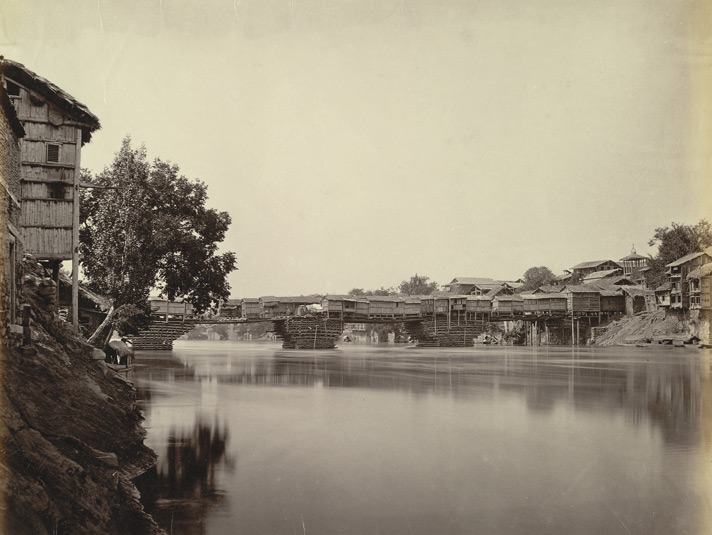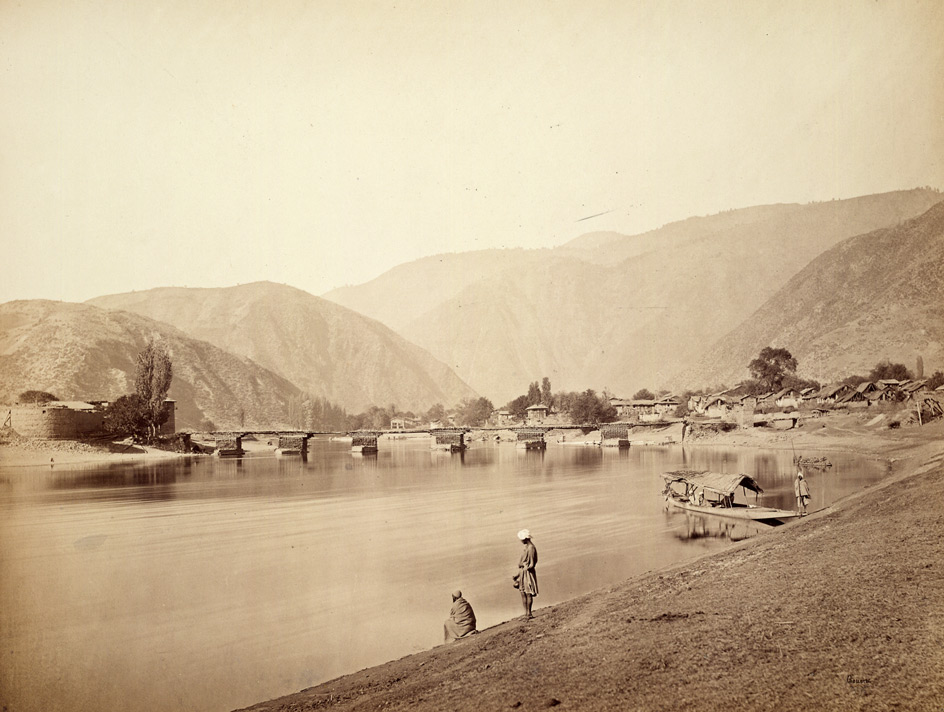
The famous wooden bridges of Valley added to uniqueness of the Kashmir’s architecture and have served people for centuries. Aliya Bashir reports.
Wood was the most preferred construction material in Kashmir, the Khatamband ceiling, houseboats, doors and windows of houses were all made of wood. Kashmir had a uniqueness for its wooden bridges build across the rivers and streams crisscrossing it while in other parts of the world steel became the preferred material for building bridges.
Timber has played a major role in the architectural development of Kashmir. During the 14th century, the Muslim rulers of Kashmir started building bridges on rivers and streams improving the quality of life here and changing life styles.
Srinagar was once known as the city of seven bridges. These wooden bridges were a showcase of locally developed architecture. The historic bridges connected various parts of the city on either side of the Jhelum. The first wooden bridge was Ali Kadal built on Jhelum River or the ‘Vyath’. A bridge is called Kadal in Kashmiri language. Ali Kadal was constructed by Sultan Ali shah (1415 CE), Zaina Kadal by Zain-ul-Abideen in1437 CE, Fateh Kadal (Sultan Fateh Shah in 1500CE) , Habba Kadal (Sultan Habib Shah 1573 CE), Nawa Kadal (Noor din Khan 1666CE), Safa Kadal (Saif-ud-din Khan 1671CE) and Amira Kadal (Amir Khan 1774). Later on Zero Bridge (earlier Zaer-kadal) and Budshah were built in 1957.
Among the seven wooden bridges in Srinagar, only three remain, mostly in disuse or used by pedestrians. “The old Habba Kadal, Zaina Kadal and old Zero Bridge remind us of the architectural development of Kashmir,” Says Ghulam Ali Bhat of Zainakadal, Srinagar.
The massive bridges were constructed by driving huge cedar logs deep into the river bed with tonnes of rocks dropped around them.
“We had surplus availability of wood which was suitable construction material to our region’s climate and was used extensively in constructions. Mostly deodar tree were used for the wooden construction and wooden bridges was one among such log construction proving a success both in sustainability and suitability,” says Fida Mohammad Hasnain, a noted historian.

The wooden bridges had become a part of Kashmir’s history and heritage. “These bridges have their own importance and beauty like any other monuments such as those built by the Mughals. While the wooden bridges are making way steel and mortar ones, these were Srinagar city’s lifeline for centuries,” says Bhat.
Ghulam Rasool Wani, a shopkeeper in old city says, “The bridges hold a whole lot of our (my) childhood memories. We have lost, and are still losing, our historical wooden bridges in the rat race of commercialisation which are being replaced by concrete bridges to suffice the burgeoning vehicular traffic.”
Historians say the expansion of Srinagar city started in the 14th century and till then people lived on only one side of river Jhelum and Zain-ul-Abideen, then ruler of Kashmir expanded the capital to link it to the other side of the river. “Regardless of the capability to preserve the heritage like in advanced societies, our heritage or archaeological experts in Kashmir lack seriousness, knowledge and technology to preserve the wooden bridges. We are losing our precious jewels in the form of these bridges,” says Zareef Ahmed Zareef, a historian.
The wooden bridges were built on the cantilever principle. The main supporting piers take the form of a massive wooden structure which resembles an inverted pyramid with its abridged apex resting on a solidly built masonry cutwater. Each pier was built by layers of logs, in alternate courses placed transversely at right angles to make them enough strong to withstand floods and to carry a reasonable load.
“While making bridges there should be openness in mind as beauty element is very important. But our bridges don’t have even that. Contemporary engineers should keep aesthetics in mind as our predecessors were not having right engineering skills but still they were able to do justice both with nature and building architectural marvels,” says Sameer Hamdani, Senior Architecture, INTACH (Indian National Trust for Art and Cultural Heritage), Kashmir Chapter.
Wooden bridges were an economic alternative important to every civilization during all historic periods from prehistoric times to the first American settlement, from classical Rome to the European Enlightenment, but its cost has always remained a problem.
Sameer says that wood is not so popular for rivers but in case of Jhelum wood was used as a preferred material for construction of bridges. “Though there are transitions in building material but the image of Srinagar city has been lost. Whatever we had as a heritage has been vandalized. Wood is very light and concrete weighs on eyes,” he says.















